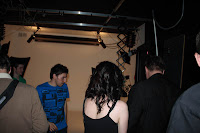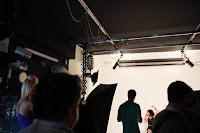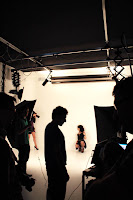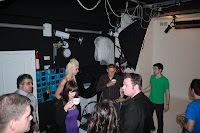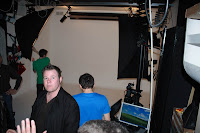Very very interesting, and was all about social documentary by various photographers over the years, from early days, through apartide and to the current generation.
The narrator was RANKIN, and I thought he could such alot better. He did meet some very interesting photographers, the favorite of mine was the young girl photographing the young men who dressed as they felt like, (and there are some notes at the end for her) not in traditional dress.There were a group of students however who did photograph in the old tradition, of just background. The progamme also covered past conflicts (with the death and injury to some mebers of the "Bang Bang" group of photographers, and finished with a sequence where people were being baptised in a river. The BangBang photographer also made underwater images with an old Nikon, but he generally uses an old Rolliflex film camera, even over the years he photographed the past conflicts, no 35mm camera here.
I am going to have to watch it again to get the names of the photographers involved.
As my themes for this session are based on Lifestyle, portrature and products I found this very intersting as a development to look to for the future.
Nontsikelelo Veleko
Born in 1977, Nontsikelelo Veleko lives and works in Johannesburg. She is a highly original photographer and project manager/co-coordinator at the Market Photo Workshop, where she previously trained in the art of photography. In the last couple of years, Lolo has been gathering a great deal of attention with her striking work entitled Beauty is in the eyes of a beholder. She was a nominee and finalist of the MTN New Contemporary Artists in 2003 and has since been participating in important local and international exhibitions. Already this year, her photographs were exhibited in the landmark exhibition Snap Judgements : New Positions in Contemporary African Photography at the International Center of Photography in New York and in Personae Scenarios-the new African Photography, Brancolini Grimaldi Arte Contemporanea in Rome. Also recently she was participating in well publicized shows like Click at the Goodman Gallery in Johannesburg, or Unsettled, 8 South African photographers in Denmark, Sweden and South Africa, as well as other exhibitions and projects in Switzerland, the United States and of course at home.



These images are a very good example of the lifestyle that some young african are adopting, and one image shows the dynamic fashion shot that she is already taking.















